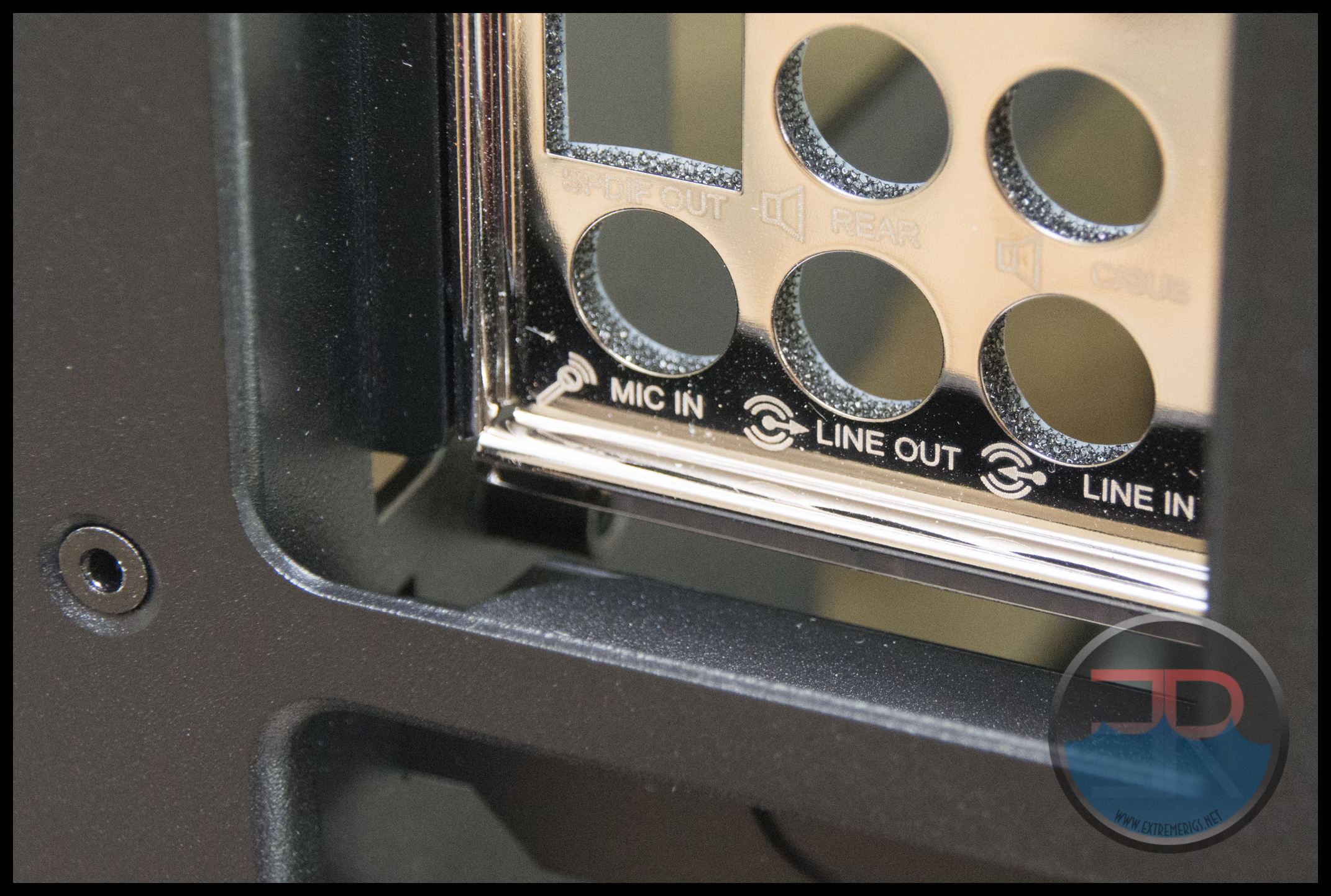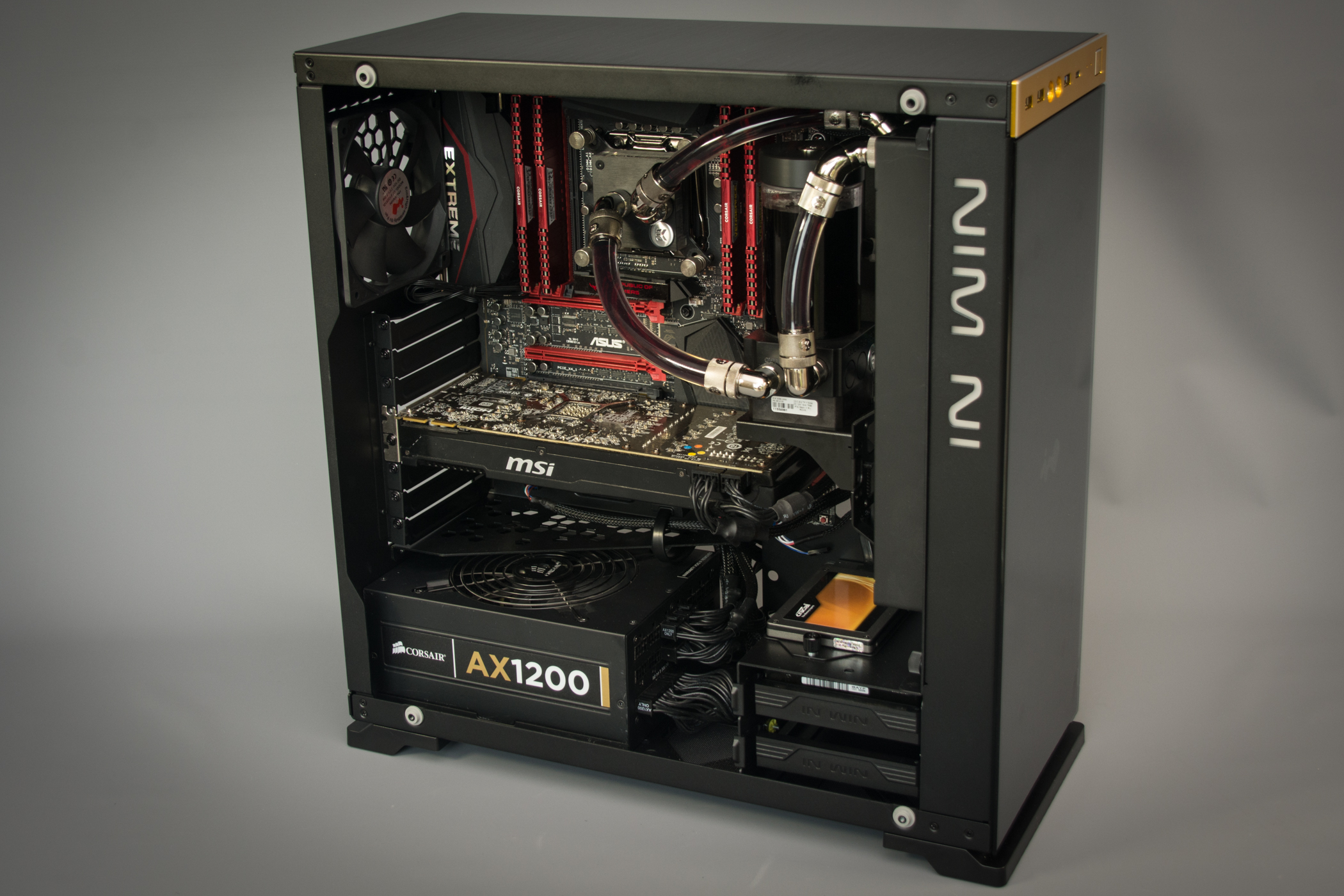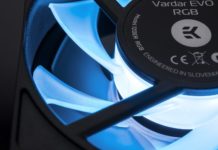The 805 is an easy case to build in – some standoffs (supplied) first need to be added to support the motherboard of choice, but then it can be screwed in:
It’s easy to mount the PSU as it can be slid into place from either side of the chassis and mounted with the supplied screws.
The IO plate itself isn’t fixed on all four sides. It does do a better job than the H-Frame mini however as the plate does at least stay in place. In some ways this is good – it allows you to move the IO plate around if needed, however that has never been a need for me, and I’d rather have a sturdier grip on the plate.

It should be noted that even with a relatively long power supply there is a good amount of clearance for cables before hitting the HDD cages:
It should also be noted that the rear panel is cut away allowing easy access to the PCI slot screws. This is a great detail that some cases like the Corsair 900D really could have benefited from.
It can also be seen that the audio and power/reset switches are not sleeved until the end of cable allowing some multi-colored wires to be visible.
There was however plenty of easy cable routing and space at the top of the board:
The rear exhaust fan also has clearance for the Rampage V’s IO cover/heatsink which is great news. We were also able to fit a slim 240 radiator, cpu block and pump quite easily. However there were compromises:
The pump was mounted such that it would interfere with any normal length graphics card. In this build we used an older reference 7970 card that would be considered a “normal” length for a powerful GPU. In order to fit it we had to move it to lower PCI slot. A water cooler therefore may wish to relocate the pump and reservoir if they are using a big GPU.
The back of the case left just enough depth for cables:
The supplied stick on cable clips were very useful:
However the end user has to remember that this entire area will be seen through a glass panel and therefore keeping it perfect is going to be very necessary:
Our quick job at cable routing was far from perfect and it showed with the panel on:
Of course glass is also very reflective and it’s quite hard to get a shot without a reflection:
The end result is pleasant though and the smoked glass is dark enough to hide some of a builds imperfections while allowing the general vibe to shine through.
So now that we’ve built inside the case we should really check the airflow!























[…] In Win 805 Case Review […]
I’m having the same issues with this case, the air flow is absolutely shocking. I had to underclock my i5 4670k from 4.6Ghz down to 4.2Ghz to get acceptable temperatures. I don’t know why In Win didn’t bother putting any airflow under the PSU as all it does is exhaust into the GPU, causing it to run hot also. Also with the HDD bays, they could have designed the case with more clearance underneath the bays so that you could still run 2 fans of the bottom of the case, or atleast even 1 fan with the bays still in. If you want to run 2 fans on the bottom of the case then you must remove the HDD bays, which means you can’t mount any HDDs. I just don’t get it, why bother making a case look so amazing but then skipping out on the design performance wise. I’m thinking I will add ventilation under the PSU then drill holes so that it can be mounted the right way up. But creating ventilation to the front of the case will be hard as I’m not willing to mess around with the glass at all.
I have a 4670k @ 4.5 ghz running at 61c after 4 hrs. full load paired with gtx 770. These temps are more than acceptable. also the fan on the psu is exauhst not intake (not blowing anything on on your gpu. I use rear mounted push pull corsair h80i for cpu cooling and titanx reference cooler on gpu. Two 140mm fans mounted in front of case for circulation, no bottom intake fans. granted this is a low power rig, but the case is not as bad as you make out. If your worried about the cost of a few fans to add in, you should not have purchased a 200 dollar case.
PSU acts as a second rear exhaust fan, it extracts air out of the case! Corsair CPU water cooler H105 240 mm radiator/fan assembly mounted at front of case sucks air up from large filtered intake at bottom. EVGA water cooled GTX 980Ti Hybrid radiator/fan replaces rear top fan. This configuration keeps everything super cool …
You can put 4 rubber spacers 1/8 between the case and the glass front panel (front panel is held in with 4 screws). That way the front fans will suck in fresh air, its a small gap but a gap none the less. Without that small mod you really need to place atleast 1 fan in the bottom of the case. Also just mod a little so you can mount the bottom fans with the hdd case. Yes i agree its a shame but if you take the extra time you will have a case like no one else!.
PSU acts as a second rear exhaust fan, it extracts air out of the case! Corsair CPU water cooler H105 240 mm radiator/fan assembly mounted at front of case sucks air up from large filtered intake at bottom. EVGA water cooled GTX 980Ti Hybrid radiator/fan replaces rear top fan. This configuration keeps everything super cool …
Hey, this was a sweet review. I am wondering what parts you used for the cooling system? I am planning on copying your cooling setup. Let me know, thanks.
Awesome review! What are all of the parts you used for the cooling? I want to copy your cooling on my build with the In Win 805.
On the 805 I used an EK Supremacy MX cpu block, EK’s 3/8 x 5/8 compression fittings and their clear tube, an EK DDC 140 reservoir pump combo and an EK PE radiator. It’s very similar to this kit: https://www.ekwb.com/shop/ek-kit-l240-1 with the exception that I’m using a 140 res vs a 100 and I’m also using the universal mount to mount the pump to the radiator
If you are only doing a cpu loop then an AIO like the EK predator or Swiftech H220x might be a good choice also for the 805.
What did you do for setting up the loop on this build with the kit you used besides the small changes?
Last question, where did you get the universal mount for mounting the pump to the radiator?
Sweet, thanks for listing the parts and similar kits. Also thanks for the reply too.
Comments are closed.